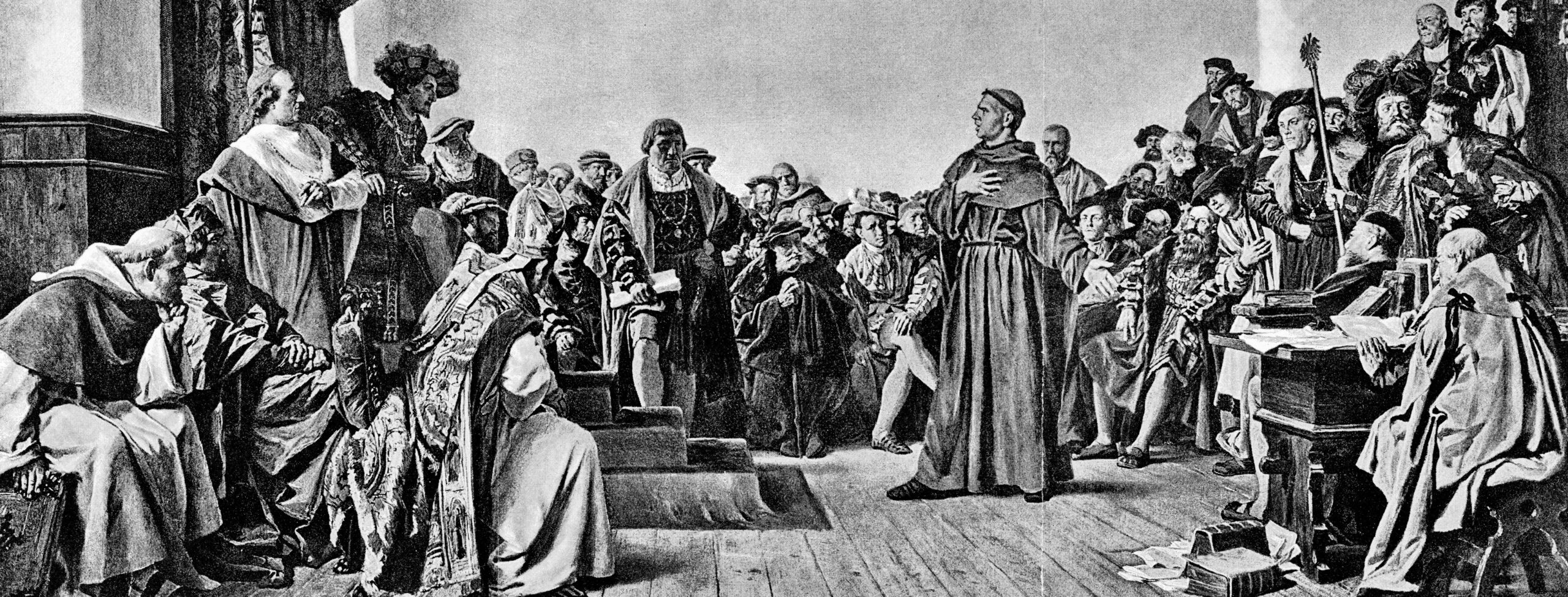Introduction
Delegates to the synodical conventions of The Lutheran Church—Missouri Synod later this month have a duty to be conscientious. This includes a duty to study the reports and overtures in the convention Workbook and the further reports and resolutions in Today’s Business. It is work. It takes time. It is the job.
For my own use in voting and for possible participation in open meetings of the floor committees, I prepared study notes about issues coming before the convention. In this article I share selected “notes to self” on the following topics:
- Concordias:
- Governance of the Concordia Universities
- CTX Lutheran Identity
- CTX Unilateral Separation
- Confessions
- Atonement-Justification
- Catechisms
- Annotated Large Catechism
- Corporations
- Chief Executives of Synodwide Corporate Entities
- Election of Synod President
This necessarily excludes other matters even though they also are important. We cannot address everything in one article.
Concordias
Governance of Concordia Universities
A prior convention adopted a resolution numbered 7-03 to study and recommend a significant update to the organization and governance of the schools of the Concordia University System. The 7-03 committee fulfilled that mandate and formulated an overture for the coming convention. Through subsequent process involving contributions from many in the synod, significant changes were made to the committee’s overture. The result is Overture L7-27, Today’s Business, First Edition, pp. 52-75. Yes, it is long, 24 pages. But major and bitter experiences show that this is necessary.
As preparation for reading Ov L7-27, see the following explanation and overview in the President’s Report, Part 2, suggested resolutions, Committee 7, University Education, first suggestion, p. 25, ll. 6-20:
Present the proposed governance plan (Overture L7-27) adopted by the LCMS Board of Directors (BOD) in May, with appropriate and helpful recent suggestions from the various university regents, presidents, etc. When the presidents (who had been thoroughly involved in the drafting of the original governance plan) informed me of concerns in the fall of 2022, I urged them to contact BOD member Christian Preus, chair of the 7-03 committee, and present their concerns. As a result, the document was re-written with the university presidents at the table. That version was passed in May and has continued to be adjusted per suggestions from the field. It retains the universities as “agents” (instead of the looser affiliation model) of the Synod and replaces a process of ecclesiastical accreditation (which included the possibility of removal of a school for theological violations) with an ecclesiastical/doctrinal visitation process. The resolution should require university bylaws to clearly prohibit a board of regents’ unilateral withdrawal from agency status or the ability to change the institution’s articles of incorporation to withdraw from Synod oversight. The university bylaws must provide for the removal of regents who act contrary to the doctrine, confession, Constitution, and Bylaws of the Synod. There must also be provisions to strengthen the boards of regents.
I urge delegates to heartily vote in favor of this overture.
Along with that overture is another, Resolution 7-04, “To Revise Bylaws to Revisit and Renew Relationship of Colleges and Universities with the Synod,” pp 141-165. I urge delegates to vote in favor of this overture.
Resolution 7-05, “To Bring Accountability to Concordia Board of Regents and to Improve Doctrinal Fidelity and Amenability to Ecclesiastical Supervision, pp. 165-166 is a composite of many overtures with added ideas from Floor Committee 7. It is based on Overtures 7-10 through 7-15, Workbook, pp. 355-358. One of those was Overture 7-11 of the Montana District, “To Reform Composition of Boards of Regents of Concordia University System Universities to Improve Doctrinal Fidelity and Amenability to Ecclesiastical Supervision.”
After a highly respected friend of mine in Wisconsin explained to me what was going on at Concordia University Wisconsin and how the composition of the boards of regents was contributing to the problem, I studied his ideas. (I would like to credit him, but believe he would like to remain anonymous.) The study showed that his ideas were most sound and only needed some nuts-and-bolts implementation to be put into effect. I wrote an overture, brought it to the convention of the Montana District, the convention adopted it, and it was memorialized to the synod as Overture 7-11.
But, our convention was in June 2022, and the rebellious action of the majority of the Board of Regents of Concordia University Texas had not happened. That happened on November 8, 2022. Had I known what was going on in Texas, the overture that I drafted would have had to be expanded.
This makes a good illustration of how a floor committee structure can be a good thing. This floor committee harvested good elements from a collection of overtures, updated them for events that happened after those overtures were written, and combined them into a better resolution. The committee’s resolution will, so to speak, move the ball down the field toward the right end zone. I encourage delegates to vote in favor of it.
CTX Lutheran Identity
Concordia University Texas (CTX) has lost its way on Lutheran identity.
I have explained elsewhere[1] the impoverished definition of “Lutheran” by CTX’s Provost and Executive Vice President in her doctoral dissertation.[2] She defines “Lutheran” in essentially the same way as the papists, Zwinglians, Anabaptists, Radical Reformation, and other adversaries of the Reformation in the 16th century did to undermine the Reformation.
Reports of the Concordia University System[3] and the Office of the President[4] amply and appallingly demonstrate that while CTX professes to be maintaining Lutheran identity, that is an empty assurance.
In the visitation report, articles in the Reporter, etc., the Synod President and others have restrained themselves, believe it or not, in their discussion of problems with Lutheran identity at CTX. In “President’s Report, Part 2,”[5] the Synod President pulls back the curtain a little farther revealing even deeper problems with Lutheran identity at CTX. Delegates should make a special point of reading this along with the CUS report and the visitation report.
CTX Unilateral Separation
There will be many matters relating to CTX’s rebellious and pretended separation from the Synod and establishment of an imposter board of regents. To rightly understand these matters and be confident in voting, delegates would do themselves a favor and represent their constituencies better by reading “University Board of Regents Unilateral Separation (232-3006),” Today’s Business, First Edition, pp 30-34.
This is a decision of the Commission on Constitutional Matters about CTX’s separation. The CCM was asked to answer 10 questions. It did so, which is quite valuable by itself. But before answering them, they also gave necessary background from the constitution and bylaws of the Synod. That background is illuminating in understanding the situation, the questions, the answers, and the various resolutions coming before the convention.
Where having this background could become especially valuable is if any new overtures not already disseminated in the Workbook or Today’s Business, First Edition come before the convention. This could happen and it holds potential for being a very good thing. But it would not be as easy for delegates to understand without the background this decision provides. Thus an opportunity to do a very good thing could slip through our fingers on a failed vote just because delegates did not prepare themselves. Be prepared. Read this decision.
One of the important resolutions that we can read and consider in advance is 7-03, “To Call Concordia University Texas Leadership to Repentance,” pp. 139-141. As far as it goes, this resolution is right and good. I should have liked to see more, but this resolution does a measure of what needs to be done. Further, it gives footing to synodical leadership to do more, if they would. We must give them at least the hand that this resolution offers.
The one thing that I am not clear about in this resolution is the last resolve, “That the President of Synod stand prepared to grant holy absolution to those who repent and want to do better by rescinding their actions resulting in reconciliation and restoration.”
First, I thought for absolution I am to go to my pastor.
Second, does this absolution, reconciliation, and restoration alleviate temporal consequences that ought to flow from the Fourth, Seventh, and Ninth Commandment breaches and the breaches of fiduciary duty under the synod’s constitution and bylaws?
If not satisfactorily explained, I would like to see that resolve removed by an amendment deleting it.
Confessions
Atonement-Justification
The Synod President suggests “A resolution requesting CTCR documents addressing the following: … atonement/justification ….”[6]
We have a problem in our circles and church with a minority popularity of writers whose teachings about atonement are heterodox or heretical.[7] This is a grave matter. We even publish some of those false teachers in synodical books and Concordia Publishing House books. It is good to see the Synodical President include this issue, among other important issues, in his suggestion.
It is good to see him express this locus of doctrine as the combination of atonement and justification, since part of the essential problem is when adversaries of vicarious satisfaction separate what they claim is justification from its ground or basis in the atoning work of Christ.[8] It would be well also for more to be done than just refer it to the CTCR, but this is a good suggestion by our Synod President.
Catechisms
Annotated Large Catechism
In conscience, I will not be able to vote for Resolution 5-14, “To Address Release and use of Luther’s Large Catechism with Annotations and Contemporary Applications.”[9]
First, let me say some commendatory things about this resolution. Floor Committee 5 deserves commendation and appreciation for filtering out some bad material in three of the four overtures that were referred to them. The four were Overtures 5-30, 5-31, 5-32, and 5-33, and were titled as follows:
- 5-30, To Commend Luther’s Large Catechism with Annotations and Contemporary Applications
- 5-31, To Commend Luther’s Large Catechism with Annotations and Contemporary Applications
- 5-32, To Cease and Desist Publication of Luther’s Large Catechism with Annotations and Contemporary Application
- 5-33, To Encourage Christian Collegiality in Theological Discussion, Including Discussion Related to Large Catechism Volume
The titles of 5-30 and 5-31 sound innocuous. Certainly, a work of this scale and one which had been mandated by prior synod conventions ought to be appreciated. Much of its content is salutary and should be commended. But past their titles, the contents of the overtures were a different kettle of fish.
First, consider assertions of fact that both overtures invite delegates to join in making. While 5-30 was memorialized to synod by a congregation in Fort Wayne, a congregation in California, and a circuit in Indiana, and 5-31 was memorialized by a circuit in Minnesota South District, their language is remarkably similar.
Whereas, Many contributors to this volume were harassed privately and publicly for their participation in this project. [5-30, fifth whereas, p. 305]
Whereas, Many contributors to this volume were vitriolically harassed privately and publicly for their participation in this project. [5-31, sixth whereas, p. 305]
Consider the plight of an ordinary delegate. Voting for these overtures would add a delegate’s voice to those assertions of fact. It would do that because of Standing Special Rule 3, Today’s Business, First Edition, p. 15, “The preface, preamble, rationale, and whereas sections shall be regarded as integral parts of resolution and therefore subject to the same consideration and adoption.” How would a majority of the delegates know about vitriolic harassment in private? Didn’t anyone in those two congregations and two circuits discern that they were inviting delegates who do not know the assertion to be true (not saying that it is not true, only that the delegates do not know whether it is true) to join in the assertion by voting for it? What would be the name for decrying false witness by engaging delegates to give witness to something they do not know?
Second, consider the one-sidedness. In the events referenced in these overtures, there were at least four and possibly more than four “sides.” These overtures call for condemnation of only one side.
In the events, one group of critics of the annotated Large Catechism accused some of its authors of wokeism, Critical Race Theory, and such. Their criticism fails for two weighty reasons.
The first reason is that their usage of those terms was not denotative but connotative. The usage did not reflect what “Critical Race Theory” means as one application of Critical Theory from the Frankfurt School and Cultural Marxism.[10] The usage did not reflect what “woke” means in the Frankfurt School, Cultural Marxism, and Critical Theory.[11] The critics used those terms as the propaganda technique of name calling. The usage was as a popular pejorative du jour, rather than according to a proper definition as ought to be used in conducting a principled disputation.
The second reason is that their evidence, while not nonexistent, was slight and unable to carry the weight of their argument, even if they had been using the terms denotatively.
Having said that, what was the response of the opposite “side?” Remember that I have said there were at least four sides, so what I am about to say signifies nothing about two of the remaining sides. It only assesses the response of the side “opposite” to the critics whose criticism is described above. This opposite side painted the critics en masse as “Alt Right,” “Nazis,” “racists,” and “White supremacists.” True enough, one of the outspoken critics did and continues to espouse ideas about race incompatible with Scripture, Christianity, and Lutheran theology. Those ideas ought to be rejected clearly and sternly. That being said, the roller brush spattered the paint of “Alt Right” and such onto many who did not deserve it. This was stooping to the level of the critics. It was not only fighting fire with fire, but with the same kind of fire, connotative propaganda of name calling. The usage of “Alt Right” and so on was no more denotative than had been the usage by the critics of “woke” and “CRT.”
The difference was that while the critics in the first group were lay people, many of the counter-critics were ordained, theologians, or officials. That gave me a feeling of sinking disappointment.
If we were going to put things right, would we condemn in only one group what both groups did to each other? In the context of the events, these overtures come off as partisan and recriminatory, not impartial and exhortatory. They come off as political, not ecclesiastical.
The two additional groups were (with the prior two groups labeled A and B): (C) critics of limited parts of the annotated LC on grounds having nothing to do with alleging wokeism, CRT, and such, but instead on qualification of authors and doctrinal content; and (D) defenders of the annotated LC who defended denotatively and substantively without stooping to the level of those claiming “wokeism” and such by counter-name-calling “Alt Right” and such.
There were and are critics of portions of the annotated LC whose issues are substantive and who have expressed their critiques in appropriate fraternal modes. These, however, seem to have been lumped into a single them-tribe who are accused of baseless “attacks” on the us-tribe.
Resolved, That the harsh and baseless attacks against this volume, the CTCR, and CPH be condemned as contrary to Paul’s command that “all bitterness and wrath and anger and clamor and slander be put away from you” (Eph. 4:31). [5-30, second resolve, p. 305]
Resolved, That the harsh and baseless attacks against this volume, the CTCR, and CPH be condemned as contrary to Paul’s command that “all bitterness and wrath and anger and clamor and slander be put away from you” (Eph. 4:31). 95-31, second resolve, p. 305]
Maybe they did not mean to say that all the criticisms were attacks, baseless, bitter, wrathful, angry, clamoring, and slanderous. In the inflamed name-calling and counter-name-calling, creating resentment on both sides not just one side, we might be sledding uphill trying to get many delegates to put the best construction on that resolve. These overtures do not look like they are above the fray. They look like they are another skirmish in the fray.
Lost in both overtures was the role of Concordia Publishing House. Understand, the annotated LC is not a product of CPH. It is a product of synod, organized through the CTCR, in response to prior resolution of synod in convention, which synod had the prerogative to direct CPH to publish for synod. CPH took a lot of hits and institutionally never defended itself. It hung like a punching bag. Statements of officialdom that contributed to the false condemnation of CPH were not amended, clarified, supplemented, or anything by those officials. That conveniently spread the blame. Only later when the CTCR issued a statement did that air begin to clear. Kudos to the CTCR for that. They manned up. But it is strange that these congregations and circuits who are expressing concern for fairness expressed nothing to clarify CPH’s role, innocence, and suffering of misinformation.
Thankfully, Overture 5-33 was better. It originated with the faculties of the LCMS seminaries at St. Louis and Fort Wayne.
Whereas, Controversy over this volume has evoked many regrettable expressions of anger and dissension, particularly online, which are not befitting the charity enjoined upon us by the Scriptures for theological discussion, debate, and churchmanship (John 13:35). [5-33, sixth whereas, p. 306]
While the word “dissension” possibly refers only to those who dissent from portions of the annotated LC, aside from that possibility, the rest of this recital is written as applicable to misconduct on both sides. Similarly, this overture’s four resolves are applicable to both sides and what I defined above as the third and fourth sides, which is as it should be.
In addition, this overture does not allege any private goings on, and so it does not put delegates into the untenable position of voting to allege private facts that 5-30 and 5-31 did.
Before Today’s Business, First Edition was published, my hope was that 5-33 would come to the floor before 5-30 and 5-31. Then, if 5-33 passed, that should be adequate, and I would have been inclined to vote “No” on the other two.
Overture 5-32 calls for “the Church to immediately cease and desist publication, sales, and distribution of” the annotated LC. Given the substantive critiques from group (C) as defined above, it is easy to sympathize with this overture. But, it is swatting a fly with a sledge hammer when it could swat the fly with a fly swatter. Let us imagine an amendment to this overture that calls for ending the distribution of the existing version of the annotated LC and preparing a second edition that corrects those problems raised by group (C) that need to be corrected. That could root out error and unqualified or disqualified authors while maintaining koinonia and synod (walking together).
Too bad we had to spend so much time on those four overtures.
Resolution 5-14 as reported by Floor Committee 5 relieves delegates – to an extent – of the affrontery of the one-sided, tribalistic, and political overtures. It starts with the better overture produced by the seminaries. So, let’s give credit where credit is due for that.
But, Resolution 5-14 short circuits the fly swatter solution requiring correction of the annotated Large Catechism in a second edition. It requires us to approve and encourage the use of the annotated Large Catechism, flaws and all. It dismisses as if non-existent group (C) critics of limited parts of the annotated LC on grounds having nothing to do with alleging wokeism, CRT, and such, but instead on qualification of authors and doctrinal content. That is an unsatisfactory outcome that is not well suited to walking together.
I cannot ignore the concerns of group (C) when the annotated Large Catechism does suffer from:
- denial by omission of the atonement in an article where the subject made it the duty of the author to confess the atonement.
- confusion of the two kingdoms with the three estates.
- confusion of the origin of one of the powers of the kingdom of the left hand as being in the Fifth Commandment when it is in, or at least equally in, the Fourth Commandment.
- misapplication of estates and kingdoms to the Christian life.
- condemnation of innocent acts of Christians on the basis of those confusions and misapplications.
- unqualified and disqualified authors in not just any publication but a synodical publication of the Catechism.
I am not ready to approve or commend the use of a synodical Catechism with that many flaws of that order of magnitude. Neither, however, am I ready to scrap the whole thing. What I want to see is withdrawal of version 1.0 and issuance of a Second Edition.
Corporations
Election of Synod President
Resolution 9-11 would change the election of Synod President from being conducted ahead of the convention with the president-elect presiding at the convention. Instead, the Synod President would be elected at the convention.
This looks like an important change and I am not yet savvy to what is going on with this. I am looking to take counsel from people who understand this issue before I decide.
The same goes for Resolution 9-12, “To Amend Bylaw 3.12.2.4 to Change How Subsequent Ballots are Determined in Election of Synod President.
I raise these two resolutions only to alert delegates to be aware of them and find out what is behind them.
Chief Executives of Synodwide Corporate Entities
Resolution 9-03 is about recruitment and appointment of chief executive officers of synodwide corporate entities. Outwardly and on first reading, that might appear to many delegates like just some bureaucratic stuffiness. In reality, it is quite a practical and important matter.
When the former President and Chief Executive Officer of Concordia Publishing House, Bruce Kintz, retired, the Board of Directors needed to fill that vacancy. As a member of the Board, I can tell you, every member was conscientiously and expressively concerned about wanting to follow synodical bylaws. There were questions about the apparent difference in process to make an original appointment versus filling a vacancy; about whether a slate could be a slate of one candidate; about the meaning of consultation with the Synod President; about the meaning of concurrence of the Synod President; at what stage consultation had to happen and at what stage concurrence had to happen; and so on.
This issue is in the purview of the Commission on Handbook. It happens that a member of the CPH Board is also a member of the Commission on Handbook. Thus, the issues could be well communicated between the Board and the Commission. The outcome in Resolution 9-03 does achieve the goal of increased clarity. Whether in substance the resolution is the right solution only experience will be able to decide. I intend to vote in favor of the resolution. Later, if experience shows that the substance needs to be revised, the way will be open to do that. In the meantime, at least we achieve clarity.
[1] See under the headings “The Name ‘Lutheran’” and “Definition of ‘Lutheran’” in T. R. Halvorson, “The Sovereignty of Nebulous Ethos at Concordia Texas,” Brothers of John the Steadfast, June 11, 2023, https://steadfastlutherans.org/2023/06/the-sovereignty-of-nebulous-ethos-at-concordia-texas/
[2] Kristi K. Kirk, The Changing Nature of Church College Relations: A History and Case Study of Concordia University Texas, Ph.D. Dissertation, Capella University, 2013.
[3] See under the heading “A Special and Urgent Matter: Concordia University Texas,” in Report R13, “Concordia University System,” Convention Workbook: Reports and Overtures 2023, 68th Regular Convention, The Lutheran Church – Missouri Synod, p. 67-69.
[4] Report R64, “Ecclesiastical Visitation of Concordia University Texas,” Convention Workbook: Reports and Overtures 2023, 68th Regular Convention, The Lutheran Church – Missouri Synod, 173-179.
[5] See under heading second suggestion relating to Floor Committee 7, “University Education,” in “President’s Report, Part 2,” Today’s Business, First Edition, 2023, p. 25, ll. 21-49.
[6] President’s Report, Part 2, suggested resolutions, Committee 5, Theology and Church Relations, first suggestion, Today’s Business, First Edition, p. 24, ll. 33-36
[7] T. R. Halvorson, “Atonement in Our Circles and Church,” Brother of John the Steadfast,” December 5, 2022, https://steadfastlutherans.org/2022/12/atonement-in-our-circles-and-church/
T. R. Halvorson, “Faith-Eroding Errors of Two Popular Theologies,” Brothers of John the Steadfast, August 30, 2022, https://steadfastlutherans.org/2022/08/faith-eroding-errors-of-two-popular-theologies/
T. R. Halvorson, “Nice Guys Ruin the Consolation of Christ’s Blood,” Brothers of John the Steadfast, August 18, 2022, https://steadfastlutherans.org/2022/08/nice-guys-ruin-the-consolation-of-christs-blood/
Burnell F. Eckardt, Jr., “The Completed, Objective Reality of the Justification of the World By the Atonement: A Review Rebutting the Contrary,” Gottesdienst, August 15, 2022, https://www.gottesdienst.org/gottesblog/2022/8/15/the-completed-objective-reality-of-the-justification-of-the-world-through-the-atonement-a-review
T. R. Halvorson, “The Cracked Foundation of Forde’s Radical Lutheranism,” Brothers of John the Steadfast, February 6, 2017, https://steadfastlutherans.org/2017/02/the-cracked-foundation-of-fordes-radical-lutheranism/
[8] See under heading “Separation of Justification from Atonement” in Chapter 1, “Confession and Controversy,” in T. R. Halvorson, Vicarious Satisfaction in Lutheran Catechisms, Confessions, and Hymns (Sidney, Montana: Synoptic Text Information Services, 2023), 33-35.
[9] Today’s Business, First Edition, 127.
[10] T. R. Halvorson, “Cultural Marxism and Critical Theory: An Introductory Sketch,” Brothers of John the Steadfast, July 13, 2020, https://steadfastlutherans.org/2020/07/cultural-marxism-and-critical-theory-an-introductory-sketch/
[11] T. R. Halvorson, “What Does ‘Woke’ Mean?” Brothers of John the Steadfast, June 26, 2020, https://steadfastlutherans.org/2020/06/what-does-woke-mean/





Thank you, Tom. Some very good points were brought out in this information.